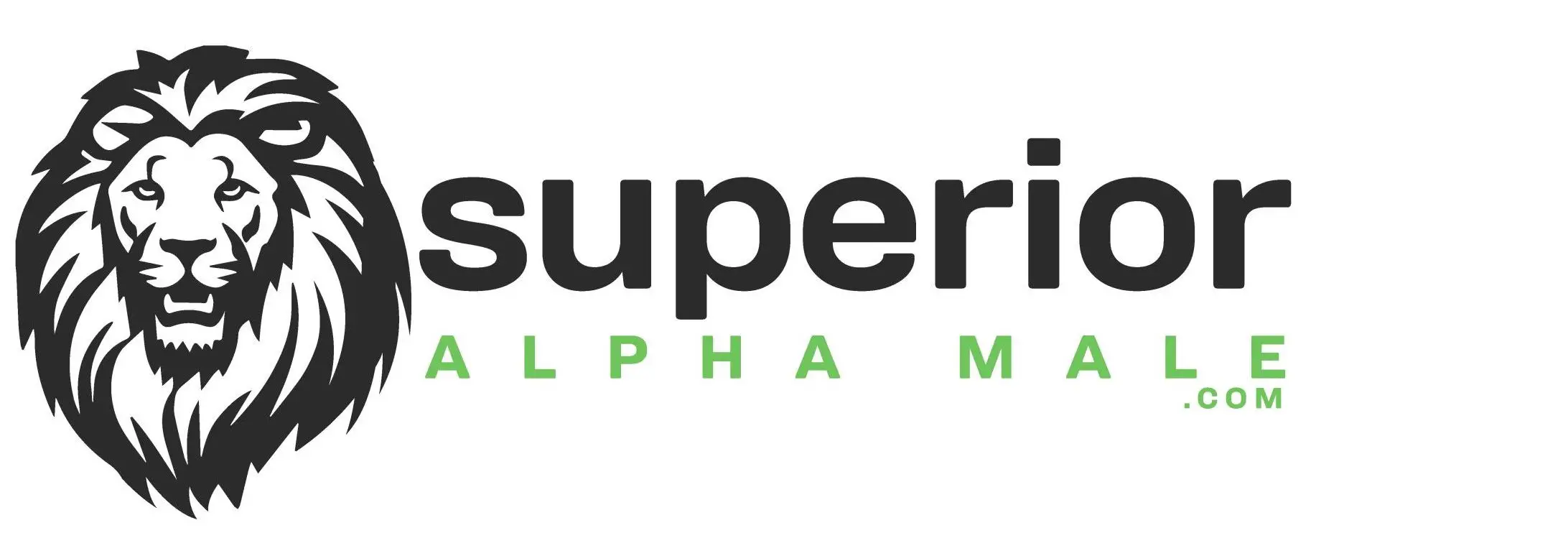Ad Blocker Detected
Our website is made possible by displaying online advertisements to our visitors. Please consider supporting us by disabling your ad blocker.
Welcome to our comprehensive guide on effective muscle building workouts for strength. If you’re looking to build muscle and increase your overall strength, this article is for you. In order to achieve optimal results, it’s important to incorporate workout routines that specifically target muscle growth and utilize proven strength training exercises. Let’s dive in and explore the key aspects of building muscle effectively.
Key Takeaways:
- Regular strength training is essential for muscle building.
- Focusing on compound movements maximizes muscular hypertrophy.
- Progressive overload is crucial for continuous muscle growth.
- Proper form, challenging weights, and appropriate rest periods are important for effective muscle building workouts.
- Working each muscle group at least twice a week is recommended.
The Top 10 Muscle-Building Exercises
When it comes to muscle gain workouts, weightlifting routines, and bodybuilding exercises, incorporating the top 10 muscle-building exercises into your training regimen can yield impressive results. These exercises target various muscle groups, allowing you to sculpt your physique and increase overall strength.
1. Bench Press: Targets the pectorals, deltoids, and triceps.
2. Barbell Pullover: Engages the lats, rhomboids, and mid-traps.
3. Bent Over BB Row: Works the lats, rhomboids, and rear delts.
4. Deadlift: Activates the lower back, quads, hips, glutes, and hams.
5. Pullup: Targets the lats, rhomboids, and biceps.
6. Squat: Engages the quads, hips, glutes, and hams.
7. Leg Press: Works the quads, hips, glutes, and hams.
8. Seated Dumbbell Shoulder Press: Activates the deltoids and triceps.
9. Upright Row: Targets the upper traps, mid-traps, and forearms.
10. Dip: Engages the chest, triceps, and deltoids.
Maximizing the effectiveness of these muscle gain workouts requires proper form, varying grip widths, and using suitable weights. Remember to consult with a fitness professional to ensure proper technique and individual customization of these exercises based on your fitness level and goals.
Train All Major Muscle Groups
Including these top 10 muscle-building exercises in your weightlifting routines will allow you to train all major muscle groups effectively. This comprehensive approach ensures balanced development, functional strength, and overall muscle symmetry. By focusing on compound movements, you engage multiple muscle groups simultaneously, leading to more efficient muscle gain and enhanced performance.
Example Workout Plan
To help you get started, here’s an example workout plan incorporating some of these exercises:
| Day | Exercise | Reps | Sets |
|---|---|---|---|
| Day 1 | Bench Press | 8-12 | 3-4 |
| Day 2 | Squat | 8-12 | 3-4 |
| Day 3 | Pullup | 8-12 | 3-4 |
| Day 4 | Deadlift | 8-12 | 3-4 |
| Day 5 | Seated Dumbbell Shoulder Press | 8-12 | 3-4 |
Note: This is just a sample workout plan. Customize it based on your fitness level, preferences, and schedule. Always prioritize proper form and gradually increase the intensity to avoid injuries and promote consistent muscle growth.
Now that you know the top 10 muscle-building exercises, start incorporating them into your weightlifting routines and bodybuilding exercises to achieve the muscle gain you desire. Remember to listen to your body, stay consistent, and celebrate the progress you make along the way.

Free Weights vs. Machines for Muscle Building
When it comes to building muscle, you have the option of using either free weights or machines. Each has its own advantages and considerations, and the choice ultimately depends on your individual preferences and goals. Let’s explore the differences between the two and how they can be incorporated into your fitness routine.
Resistance Machines: Ideal for Beginners and Form Assistance
Resistance machines are particularly beneficial for beginners and individuals who require assistance with form and stability. These machines allow you to target specific muscle groups in a controlled and guided manner. The benefit of using machines is their ability to isolate muscles, helping you maintain proper form while performing exercises.
Moreover, resistance machines often have weight stacks that enable you to lift heavier weights without worrying too much about stabilization. This can be beneficial for those who want to focus on individual muscle groups or need to minimize the risk of injury during their workouts.
Free Weights: Engage Multiple Muscles and Functional Strength
On the other hand, free weights require you to use proper form and engage more muscles for stabilization, making them particularly effective for building functional strength. Free weights include dumbbells, barbells, and kettlebells, which allow for a greater range of motion and flexibility during exercises.
One of the key advantages of free weights is that they engage multiple muscle groups simultaneously. Compound exercises such as squats, deadlifts, and bench presses activate numerous muscles throughout your body, promoting overall strength and muscle development.
Combining Free Weights and Machines for Optimal Results
The best approach for muscle building is to combine both free weights and machines based on your specific needs and goals. By incorporating resistance machines, you can target individual muscles and work on isolating specific areas. This can be particularly helpful for addressing muscle imbalances or weaknesses.
On the other hand, free weights allow you to engage multiple muscles, promoting functional strength and challenging your body in a different way. Utilizing a combination of both free weights and machines can provide a well-rounded workout routine that targets various muscle groups and promotes overall muscle growth.
Remember, no single approach is better than the other – it is a matter of personal preference and what works best for you. It’s always a good idea to consult with a fitness professional who can guide you in choosing the right exercises and equipment based on your fitness level and goals.

| Free Weights | Machines |
|---|---|
| Engage multiple muscles for stabilization | Isolate specific muscles |
| Promote functional strength | Assist with form and stability |
| Require proper form and technique | Guide proper form during exercises |
| Versatile for compound and isolation exercises | Focus on individual muscle groups |
| Require more balance and coordination | Offer controlled and guided movements |
How Often and How Much to Work Out for Muscle Gain
To gain muscle, it is recommended to work each muscle group at least two to three times a week. Consistency is key when it comes to muscle building. Aim for a frequency of two to six workouts per week, depending on your schedule and preferences.
The ideal workout volume for muscle hypertrophy is 3-4 sets of 8-12 repetitions per exercise. This range provides enough stimulus to promote muscle growth. It’s important to challenge your muscles with appropriate weights that allow you to complete the desired number of reps with proper form. Gradually increase the weight as you get stronger to continue progressing.
Progressive overload is essential for muscle gain. This means that over time, you need to increase the difficulty of your exercises. This can be done by adding more weight, increasing the number of sets or reps, or decreasing the rest time between sets. Pushing your limits and consistently challenging yourself will stimulate muscle growth and development.
Rest days are crucial for muscle recovery and growth. Giving your muscles time to repair and rebuild is just as important as the workouts themselves. Adequate rest allows your body to adapt to the stress of exercise and build stronger muscles. Plan rest days between your workout sessions to ensure optimal recovery and prevent overtraining.
Remember to listen to your body. If you’re feeling excessively sore or fatigued, it may be a sign that you need more rest. Adjust your workout schedule and intensity accordingly to avoid injury and ensure continued progress.
Importance of Nutrition for Building Muscle
Nutrition plays a crucial role in your journey to building muscle. To maximize your muscle gain workouts and achieve optimal results, it’s important to fuel your body with the right nutrients. Here are some essential muscle building tips to help you make the most of your efforts:
Calorie Surplus for Muscle Building
A slight calorie surplus is recommended for muscle building. Consuming around 5-10% above your maintenance calories provides your body with the extra energy it needs to support muscle growth and repair. This surplus ensures that you have enough fuel to push yourself during intense workouts and aids in the recovery process.
Adequate Protein Intake
Protein is the building block of muscle tissue. To effectively build and repair muscles, it’s important to consume adequate protein. Aim for at least 1.4 grams of protein per kilogram of body weight daily. Include protein-rich foods such as lean meats, eggs, legumes, and dairy in your diet to meet your protein needs. Supplementing with protein powders can also be beneficial, especially for individuals with higher protein requirements.
Carbohydrates for Energy
Carbohydrates play a vital role in providing the energy needed for intense workouts. Consuming carbohydrates before your muscle gain workouts can help fuel your muscles, enhance performance, and optimize your training sessions. Include complex carbohydrates like whole grains, fruits, and vegetables in your pre-workout meals or snacks.
Proper Nutrition for Muscle Preservation
When aiming for weight loss while preserving muscle, it’s crucial to maintain proper nutrition. While in a calorie deficit, ensure that you still provide your body with adequate protein to prevent muscle loss. Focus on nutrient-dense foods and include a balanced variety of carbohydrates, proteins, and healthy fats in your diet.
| Nutrient | Food Sources |
|---|---|
| Protein | Lean meats, eggs, legumes, dairy, protein powders |
| Complex Carbohydrates | Whole grains, fruits, vegetables |
| Healthy Fats | Avocado, nuts, seeds, olive oil |
Remember, nutrition is a critical component of your muscle building journey. By following these muscle building tips and fueling your body with the right nutrients, you’ll be on your way to achieving your fitness goals and building the strong, lean physique you desire.

Split Workouts for Muscle Gain
For effective muscle gain, split workouts offer an excellent strategy to target specific muscle groups and maximize your training efforts. By dividing your workouts across the week, you can dedicate focused training to different areas of your body, promoting balanced development and overall strength.
There are various common muscle building splits you can incorporate into your workout routine:
1. Push/Pull/Legs Split (6-Day Split)
This split divides your workouts into three main categories: push exercises (targeting chest, shoulders, and triceps), pull exercises (working the back and biceps), and leg exercises (such as squats and lunges).
2. Chest & Back/Legs/Shoulders & Arms (3-1-3 Split)
This split includes one day each for chest and back exercises, leg exercises, and shoulder and arm exercises. This balanced approach ensures comprehensive muscle development in your upper body and lower body.
3. Back & Biceps/Chest & Triceps/Legs/Shoulders (4-Day Split)
With a focus on pairing complementary muscle groups, this split combines back with biceps, chest with triceps, legs, and shoulders. This approach allows you to dedicate ample time to each muscle group, ensuring effective training and recovery.
4. Chest/Back/Legs/Shoulders & Arms (4-Day Split)
Similar to the 3-1-3 split, this variation includes dedicated days for chest, back, legs, and shoulders with arms. By targeting each major muscle group separately, you can optimize your workouts and stimulate muscle growth.
Split workouts are most effective when you train at least 3-4 times a week to allow for adequate rest and recovery. However, if your schedule permits only 2-3 workout sessions per week, full-body workouts can also be a viable option.
Remember, regardless of the split you choose, always prioritize proper form, challenging weights, and appropriate rest periods. Consistency and dedication are key to achieving your muscle gain goals.
Free Weight and Resistance Machine Exercises for Muscle Gain
When it comes to building muscle strength and stability, incorporating both free weights and resistance machines into your workout routine can yield exceptional results. By diversifying your exercises and targeting different muscle groups, you can maximize your muscle gain and overall fitness level.
Free weights like dumbbells and barbells offer a wide range of exercises that engage multiple muscle groups simultaneously. For instance, exercises such as deadlifts, squats, and bench presses are known to activate various muscles, promoting functional strength and enhancing overall performance.

Resistance machines, on the other hand, provide stability and are particularly beneficial for beginners or individuals who want to isolate specific muscle groups. These machines often come with adjustable weight stacks or resistance bands, allowing you to tailor the resistance to your level of strength and gradually increase it as you progress.
By incorporating a combination of free weights and resistance machines into your routine, you can enjoy the benefits of both. Free weights target multiple muscles and promote functional strength, while resistance machines allow for targeted isolation exercises and stability.
Here is a table highlighting some popular free weight and resistance machine exercises:
| Exercise Type | Examples |
|---|---|
| Free Weights |
|
| Resistance Machines |
|
Optimal Workout Plan for Building Muscle
To maximize muscle gain and achieve your desired physique, it’s important to follow a well-structured workout routine. An example gym workout plan for muscle gain is a push/pull/legs split with six workouts per week. This routine effectively targets specific muscle groups and incorporates compound movements that engage multiple muscles simultaneously.
Below is an outline of the optimal workout plan for building muscle:
Workout Routine:
| Day | Muscle Group | Exercises | Sets x Reps |
|---|---|---|---|
| Day 1: Push | Chest, Shoulders, Triceps | Bench Press, Dumbbell Shoulder Press, Tricep Dips | 3 x 10 |
| Day 2: Pull | Back, Biceps | Deadlifts, Pull-Ups, Bent Over Rows | 3 x 10 |
| Day 3: Legs | Quadriceps, Hamstrings, Glutes, Calves | Squats, Lunges, Leg Press, Calf Raises | 3 x 10 |
| Day 4: Rest | – | – | – |
| Day 5: Push | Chest, Shoulders, Triceps | Incline Dumbbell Press, Shoulder Press, Tricep Pushdowns | 3 x 10 |
| Day 6: Pull | Back, Biceps | T-Bar Rows, Chin-Ups, Hammer Curls | 3 x 10 |
| Day 7: Legs | Quadriceps, Hamstrings, Glutes, Calves | Leg Extensions, Romanian Deadlifts, Hip Thrusts, Standing Calf Raises | 3 x 10 |
Remember to incorporate warm-up and cool-down exercises before and after each workout session to prevent injuries and optimize muscle recovery. Rest days are vital for your muscles to heal and grow, so make sure to allow yourself at least one day of rest in between workouts.

By following this workout routine consistently and maintaining proper form, you can achieve significant muscle gain and build the physique you desire. Remember to gradually increase weights and challenge your muscles to continue making progress. Stay committed, stay focused, and enjoy the journey of building strength and muscle!
Importance of Rest Days and Proper Form in Muscle Building
Rest days play a crucial role in your muscle building journey. They are essential for muscle recovery and growth. When you engage in intense workout routines to build muscle, you create microscopic tears in your muscle fibers. Rest days allow these fibers to repair and grow stronger.
To optimize muscle building, it is recommended to work each muscle group at least twice a week. This frequency allows for sufficient rest and repair between workouts. By spacing out your workouts and incorporating rest days, you provide your muscles with the time they need to recover and grow.
In addition to rest days, other factors play a role in effective muscle building. Adequate sleep is crucial for muscle recovery and overall well-being. Aim for 7-9 hours of quality sleep per night to support your body’s healing and repair processes.
Proper nutrition is also vital for muscle building. Ensure you consume enough calories to support your workouts and promote muscle growth. Include lean proteins, whole grains, fruits, and vegetables in your diet. Properly fueling your body will provide the necessary nutrients for optimal muscle building.
Another important aspect of muscle building is maintaining proper form during exercises. When you perform exercises with proper form, you optimize muscle activation and minimize the risk of injury. Focus on engaging the intended muscle groups and executing each movement correctly.
Remember, quality over quantity is key when it comes to muscle building. It’s better to perform fewer repetitions with proper form and maximum muscle activation than to focus on high repetitions with poor form. Prioritizing proper form will help you achieve better results and reduce the risk of injury.
Keep in mind that everyone’s journey is unique, and what works for one person may not work for another. It’s essential to listen to your body, adjust your workout routine, and consult with a fitness professional if needed.
“Rest days are not a sign of weakness; they are an essential part of the muscle-building process. Prioritize rest, nutrition, and proper form to maximize your results.” – Fitness Expert
Tips for Rest Days and Proper Form:
- Take at least one or two rest days per week to allow your muscles to recover and grow.
- Aim for 7-9 hours of quality sleep each night to support muscle repair.
- Consume a balanced diet with adequate protein, carbohydrates, and healthy fats to fuel your body for muscle building.
- Focus on engaging the intended muscle groups and maintaining proper form during exercises.
- If needed, consult with a fitness professional to ensure you are performing exercises correctly and safely.
By prioritizing rest days, proper form, and overall fitness, you can optimize your muscle building efforts and achieve your desired results.

Conclusion
Building muscle requires consistency, effort, and the right training techniques. By incorporating effective muscle building workouts into your routine, including compound exercises, progressive overload, and proper rest and nutrition, you can achieve your muscle-building goals. Whether you prefer using free weights or machines, focusing on form, challenging weights, and allowing for adequate recovery are crucial factors for success.
The example workout plan provided in this article serves as a helpful starting point for designing your personalized routine. Remember, patience and dedication are key. Stick to your workouts, prioritize quality over quantity, and stay committed to your fitness journey. With time, you will start to see noticeable muscle gains and improvements in strength and physique.
Remember, muscle building is a journey that requires continuous effort and adaptation. Regularly assess your progress, adjust your workout routines as needed, and stay motivated. With the right mindset and consistent training, you can unlock your full potential and achieve the muscle gains you desire. So get started on your muscle building journey today and enjoy the benefits of a stronger, healthier, and more muscular physique.
FAQ
What are some effective muscle-building workouts for strength?
Building muscle requires regular strength training. Working each muscle group at least twice a week and focusing on compound movements such as bench press, deadlifts, squats, and pull-ups can maximize muscular hypertrophy. Progressive overload, where the difficulty of an exercise is increased over time, is essential for continuous muscle growth. It is important to prioritize proper form, challenging weights, and appropriate rest periods to ensure effective muscle building workouts.
What are the top 10 muscle-building exercises?
The top 10 muscle-building exercises include Bench Press, Barbell Pullover, Bent Over BB Row, Deadlift, Pullup, Squat, Leg Press, Seated Dumbbell Shoulder Press, Upright Row, and Dip. These exercises target various muscle groups including the pectorals, deltoids, triceps, lats, rhomboids, mid-traps, rear delts, lower back, quads, hips, glutes, hams, upper traps, forearms, and biceps. Proper form, varying grip widths, and using suitable weights are crucial for maximizing the effectiveness of these exercises.
Are free weights or machines better for building muscle?
Both free weights and machines are effective for building muscle, but they have differences in terms of engagement of muscle groups and technical requirements. Resistance machines are ideal for beginners and individuals who need assistance with form and stability. They help in isolating specific muscles and allowing for heavier weights. Free weights, on the other hand, require proper form and engage more muscles for stabilization. They provide a more functional strength and can be used for both compound and isolation exercises. A combination of both free weights and machines can be used based on individual preferences and goals.
How often and how much should I work out for muscle gain?
To gain muscle, it is recommended to work each muscle group at least two to three times a week. This can be achieved by aiming for a frequency of two to six workouts per week. The ideal workout volume for muscle hypertrophy is 3-4 sets of 8-12 reps per exercise. It is important to challenge the muscles with appropriate weights and progressively overload the difficulty of the exercises over time. Rest days are crucial for muscle recovery and growth.
What role does nutrition play in building muscle?
Nutrition plays a crucial role in building muscle. A slight calorie surplus, around 5-10% above maintenance calories, is recommended for muscle building. Adequate protein intake, ideally at least 1.4 grams per kg of bodyweight, is important for muscle repair and growth. Protein sources like lean meats, eggs, legumes, and dairy are beneficial. Carbohydrates before workouts provide energy for optimal performance. Proper nutrition also helps in preserving muscle when in a calorie deficit for weight loss.
What are split workouts and how can they help with muscle gain?
Split workouts involve dividing the muscle groups worked across the week, allowing for focused training on specific areas. Common muscle building splits include push/pull/legs (6-day split), chest & back/legs/shoulders & arms (3-1-3 split), back & biceps/chest & triceps/legs/shoulders (4-day split), and chest/back/legs/shoulders & arms (also a 4-day split). Split workouts work best when training at least 3-4 times a week. Full-body workouts are suitable for those training 2-3 times a week.
Should I use free weights or resistance machines for building muscle?
Free weights like dumbbells and barbells are effective for building muscle strength and stability. Exercises such as deadlifts, squats, and bench presses engage multiple muscle groups and promote functional strength. Resistance machines provide stability and are useful for beginners and individuals focusing on isolating specific muscle groups. Both free weights and resistance machines can be incorporated into a workout routine for muscle building, depending on individual preferences and goals.
What is an example gym workout routine for muscle gain?
An example gym workout routine for muscle gain is a push/pull/legs split with six workouts per week. Each workout targets specific muscle groups and incorporates compound movements and appropriate sets and repetitions. The routine includes exercises such as bench press, deadlifts, squats, pull-ups, and other variations that engage multiple muscle groups. Rest days and warm-up and cool-down exercises are essential for optimal muscle recovery and growth.
Why are rest days and proper form important for muscle building?
Rest days are crucial for muscle recovery and growth. Working each muscle group at least twice a week allows for sufficient rest and repair. Adequate sleep and proper nutrition support muscle building. Additionally, maintaining proper form during exercises is vital to prevent injuries and ensure effective muscle activation. It is important to prioritize quality over quantity and focus on engaging the intended muscle groups for maximum results.
Can the Workouts for Lean Muscle Also Build Strength?
Yes, a lean muscle workout routine can also build strength. By using high-intensity exercises and progressive overload, you can stimulate muscle growth and increase overall strength. Incorporating compound movements like squats, deadlifts, and bench presses will help you develop both lean muscle and strength simultaneously.


